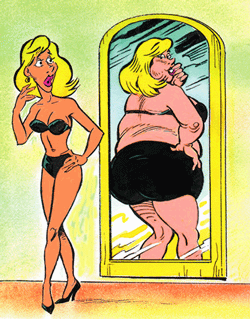morpho-, morph-, -morphous, -morphically, -morphia, -morphosis, -morphously, -morphy, -morphic, -morphism
(Greek: shape, form, figure, appearance)
Origins of morpho- words
The Roman god of sleep is Somnus; so, when we are sleepy, we are "somnolent". Sleep walking is "somnambulism" which in Latin means exactly the same thing; that is, "sleepwalking".
The son of Somnus is Morpheus, the god of dreams, indicating that sleep gives birth to dreams. Morpheus goes back through Latin to the Greek word for "form" or "shape" because dreams are forms and shapes developed in the mind while sleeping.
Some dysmorphophic persons may be unable to look others in the eyes and try to hide that part of their physical structure of which they are most self-conscious by growing their hair or wearing a hat to conceal imagined baldness or oddly shaped ears, by wearing dark glasses to hide the shapes of their eyes, or avoiding swimming so others will not see their figures.
There are also other dysmorphophic individuals who will not even look in mirrors because their own reflections upset them considerably, and they want to wash zealously to make sure that they are very clean and smell acceptable to others, although they are already very clean.

2. A person with a thin non-muscular body.
3. Someone who belongs to a physiological type that has long lean limbs.
4. A constitutional body type or build (biotype or somatotype) in which tissues originating from the ectoderm predominate; from a morphological standpoint, the limbs predominate over the trunk.
Usually ectomorphs have lean bodies with slight or minimal muscle development. Examples of ectomorphs would be marathon runners, swimmers, basketball players, and fashion models.
Generally speaking people with ectomorphic bodies have a hard time gaining weight and difficulty building muscle mass.
2. A heavy person with a soft and rounded body.
3. An individual having a body build in which tissues derived from the endoderm predominate; there is relative preponderance of soft roundness throughout the body, with large digestive viscera and accumulations of fat, and with large trunk and thighs and tapering extremities, as contrasted with ectomorph and mesomorph.
4. A mineral enclosed within another mineral, such as rutile or tourmaline in quartz.
2. A homomorphism that maps a mathematical system into itself.


